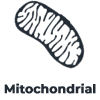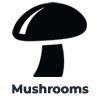The word “nootropic” was coined in 1972, by Romanian psychologist and chemist Corneliu E. Giurgea. Its etymology derives from the Greek words νους nous, meaning "mind", and τρέπειν trepein meaning "to turn." Giurgea defined a nootropic as a compound that enhances an aspect of human cognition, while being extremely safe. Essentially the idea was that taking a nootropic was a safe way to improve an aspect of human cognition, like memory or reasoning. Over the years the definition of a nootropic has loosened. Today the term nootropic is used to define any number of synthetic and natural substances that improve human cognition. The compound that led Giurgea to create the term nootropic was called piracetam; which many claim is the first nootropic ever developed. However, the honor of being called the first nootropic may actually fall to a different compound that came before it, called pyritinol.
Ultimate Guide to Nootropics | Part 1 | A New Class of Compounds
Is Pyritinol the First Nootropic?
Pyritinol was created in 1961 by Merck Laboratories, by bonding 2 vitamin B 6 compounds (pyridoxine) together with a disulfide bridge. While the term “nootropic” did not exist in 1961 when Merck created pyritinol, it was developed for the purpose of supporting cognition. It was the first nootropic in the class of vitamin B derivatives, which later grew to include sulbutiamine. Sulbutiamine is a dimer of thiamine (vitamin B1). So where pyritinol is two vitamin B6 molecules bound together, sulbutiamine is two vitamin B1 molecules bound together. This class of modified B vitamin derivatives later grew to even more compounds, like pyridoxamine, benfotiamine, pirisudanol, and nicotinamide riboside. But at the start of it all, and 11 years before the word nootropic was even created, pyritinol came into existence in a Merck laboratory in Germany. This is considered by some to be the true start of the nootropic journey. Even though the honor of being the first nootropic may go to pyritinol, it is piracetam that most people think of when they hear the term. Giurgea may have created the word “nootropic” in 1972 , but it was 1964 when he first synthesized piracetam. This first compound’s success led to an ever expanding family of compounds called racetams.
Understanding Nootropic Names
By now you may be thinking, why the term racetam? Natural and synthetic compounds can sometimes have long complex names, and are generally derived from the individual pieces of their chemical structures. Sometimes these chemical names can be very long and hard to remember. So those that develop new compounds often create shorter names for them; usually based on crucial functional groups on the molecules. We’ll use a common example to start.
Piracetam’s chemical name is 2-oxo-1-pyrrolidine acetamide. This is where the term “racetam” comes from, and what led to an every growing family of nootropics based around the 2-pyrrolidone base structure. The first racetam, piracetam, was named after the pyr (from pyrrolidone) and the acetamide group attached to it. So why not pyracetam? I suspect Dr. Giurgea didn’t want pyritinol (named from its two pyridine rings) and pyracetam to confuse people about what they were taking, and also to stand out from Merck Labs. You will see some Russian studies referring to it as pyracetam, but most of the western world calls it piracetam.
The Modern Nootropic Movement
What started with pyritinol in 1961, and was later given the name “nootropic” in 1972, has slowly grown to encompass a wide variety of synthetic and natural compounds that support cognition. While racetams are what many people first think when they hear the term, there are now countless others; from the modified B vitamins like pyritinol and sulbutiamine, to choline sources like Alpha-GPC and CDP-Choline. There are also adaptogens like panax ginseng, ashwagandha, bacopa, and rhodiola, and other compounds like uridine, DMAE, curcumin, and creatine. In addition, mushrooms that have been used for thousands of years in traditional Chinese medicine, like Lion’s Mane, Cordyceps, and Reishi, are now being scientifically proven to support aspects of cognition. With our access to knowledge and information growing every day, advancements in the nootropics space are becoming more frequent. Dr. Giurgea passed away in Brussels in 1995. However, I think he would be proud to see the expansion of his vision today. The modern nootropic movement is all about expansion of knowledge, and the ever present desire to improve ourselves. It’s about a community-driven methodical push to advance our understanding of human cognition, and there has never been a better time to jump in. Imagine where we will be in another 10 years!
Click Here For:
ULTIMATE GUIDE TO NOOTROPICS | PART 6 | CHOLINE
Browse More From Nootropics Depot
Ayurveda | Adaptogens | Amino Acids | Choline Supplements | Fitness Supplements | Immune Support | Metabolism Supplements | Mushroom Extracts | Natural Plant Extracts | Natural Nootropic Capsules | Natural Pain Support | Patented Nootropic Extracts | Sleep Support Supplements | Softgels | Solutions + Sublinguals | Enteric Coated Tablets | Nootropic Samples
Attention: These statements have not been evaluated by the Food and Drug Administration These products are not intended to diagnose, treat, cure or prevent any disease.









